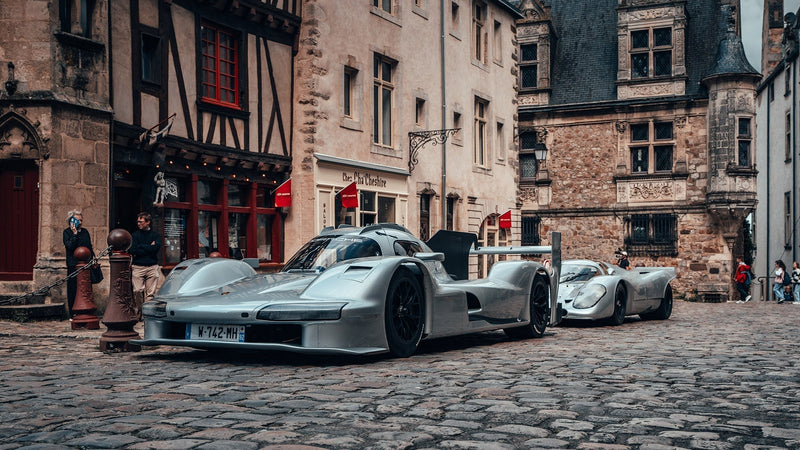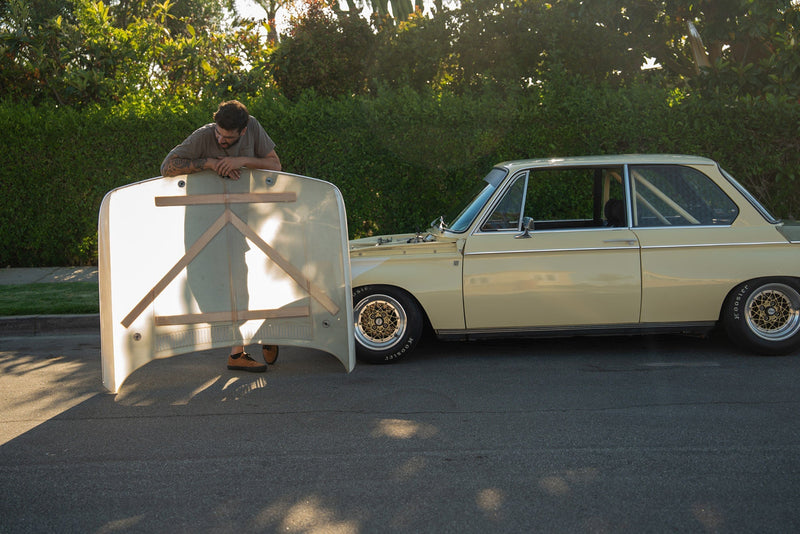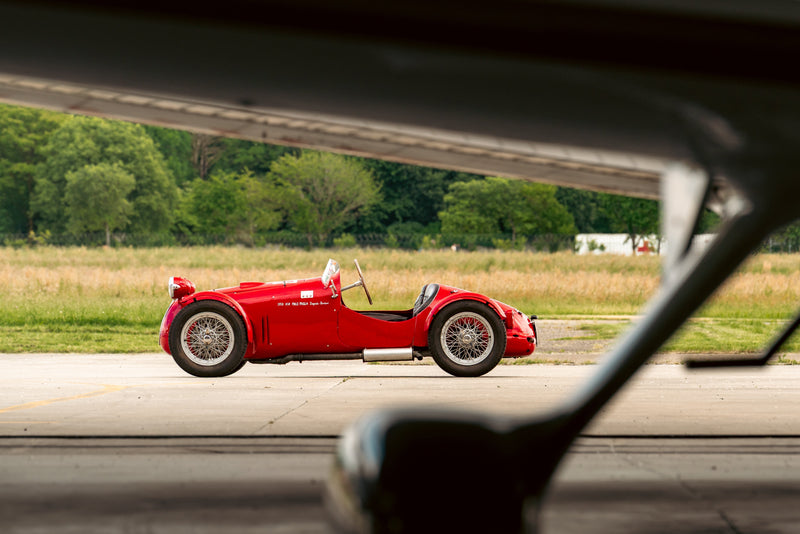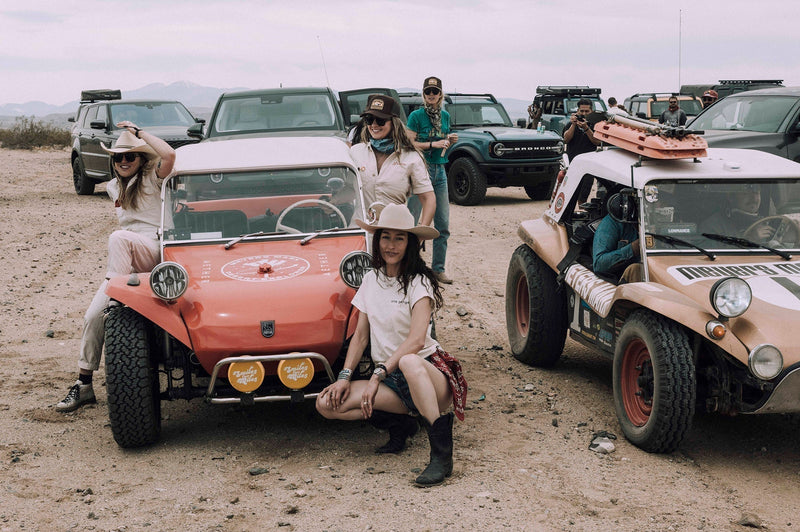The Story of James Dean and the Porsche 550 Spyder
On February 8, 1931 2:08 AM at the Seven Gables apartment house in Marion, Indiana a legend was born. Twenty-two years later and 4,117 miles across the world, a different kind of legend made its debut at the 1953 Paris Motor Show. This is the story of the Giant and the Giant Killer - two icons forever intertwined, entangled, enlaced since this day 57 years ago.


Early Beginnings
Two young lovers, Winton Dean and Mildred Wilson conceived James Byron Dean out of wedlock in a conservative era, in a conservative town – during one of the darkest years of the depression. Little did these two sweethearts know that they would become the unlikely progenitors of a cultural icon.
Mildred, unconventional despite her upbringing, raised Dean with tap lessons, violin practice, homemade puppet shows, poetry.... The two were inseparable. The Deans moved to Santa Monica, California where Mildred continued to cultivate in Dean a love for the arts before she died of uterine cancer – a major loss for the young boy.
Unable to care for Dean, his father sent him to live with his aunt and uncle in Fairmount, Indiana. Jimmy settled into farm life, the Quaker community, and an altogether unremarkable youth.
Enter Reverend James DeWeerd, Father Figure. DeWeerd's formative influence instilled and encouraged James Dean's love of theater, bullfighting, and car racing.
...
In a better, more prosperous time in Stuttgart, Germany, Dean's doppelganger was being born. It was another kind of icon – one of technological prowess, progressive engineering, and impeccable design. The progeny of the Ferry Porsche's 356 and Walter Glocker's 1951 Spyder prototypes, the Porsche 550 was the brainchild of the Zuffenhausen team who had the vision to build a specialized machine for competition.
Dr. Ernst Fuhrmann headed its engine design. With shaft-driven twin overhead camshafts, a roller-bearing crankshaft, the Volkswagen Beetle's air-cooled powerplant, and dual ignition, the engine produced 110 bhp at 6200 rpm.
It was a mechanical powerhouse, housed in a lightweight mono-coque body - designed by Wilhelm Hild and Erwin Komenda - that weighed in at only 1500 lbs. It was a champion in the making....godfather to Porsche's 917, 956, 962, and 911 GT1. It was a dream come true.


Debut / Rise to Fame
Back in Fairmount, Indiana, after graduating high school, James Dean picked up his beagle Max, and headed West, in search of fame and fortune. But Dean struggled to land bit jobs in Hollywood. He relocated to New York City to conquer the Broadway stage and gained admission to the exclusive Actors Studio. Soon, Hollywood came calling.
His big break came from none other than Elia Kazan. In 1953, the famed director set out to cast an emotionally intense, complex actor as Cal Trask in Paul Osborn's adaptation of John Steinbeck's 1952 novel, East of Eden. James Dean fit the bill.
Dean improvised his way through scenes, intensified the conflict, and stole the spotlight as an angst-ridden, misunderstood youth desperately yearning for his father's approval. The success was immediate. A giant was born.
East of Eden led to his defining role in Rebel Without A Cause...and the epic Giant...for a measly total of three feature films. As moviegoers lined up night after night to see the latest sensation, James Dean purportedly would drive past the movie theaters, gaping in amazement. It was the only window he would have into his glory – the latter two films would be released posthumously.
...
While Kazan cultivated Hollywood's newest star, racing enthusiasts gawked at the production-ready Porsche 550 at the 1953 Paris Motor Show. With the first four builds reserved exclusively for Porsche to test and race, the team presented the fifth version at the Salon. Intention was written in its engineering and design – this was a racecar, a landmark competition machine. It was a newcomer ready to outclass 12-cylinder heavyweights. It was a Giant Killer.
Audiences were wowed—it was a time of drag racing and chickie runs after all. Amidst accolades, the 550 proved its engineering sophistication. In May of '53, the 550-03 won its first race at the Nurburgring Eifel Race. That was just the beginning.
In 1954's Carrera Panamericana, it sustained speeds of more than 124 mph on the 3,000 km long track's straightaways. It became a regular contender in championship circuits: Avus, Le Mans, Targa Florio and the list goes on with over 3,000 race entries to date. But most of all, it won the hearts and minds of audiences everywhere.



Two Stars Collide
Off screen, James Dean embodied the rebel that won him acclaim. Parallel to his acting career, Dean embarked on a racing one as well. He purchased a Triumph Tiger T110, a 650 cc motorcycle, and a second-hand 1953 MG TD sports car. The MG was traded in for a 1955 Porsche Super Speedster and the T110 upgraded to a 1955 Triumph TR5 Trophy just days after filming East of Eden wrapped.
Before starting work on Rebel Without A Cause, he raced the Speedster in the Palm Spring Road Races (finishing first in the novices and second in the main event) and in Bakersfield (finishing first in class and third overall).
Then, a dark period. James Dean was barred from racing. While filming Giant, Warner Brothers forbade him to enter competition. He would have to wait.
Meanwhile, Porsche spent 1954 making modifications to the design that would render it race-ready for private owners. Roughly 90 copies of the 550 were issued - 33 were bound for the US market.
In mid-September 1955, Competition Motors in Los Angeles received five new Porsche 550 Spyders. James Dean purchased the last one (VIN 550-0055) on September 21st for $7,000. This was a hefty price, one third of his earnings from Giant. Dean immediately entered the Salinas Road Races scheduled for October 1st-2nd of that year.
Embellished with racing stripes, red bucket seats, and 130 on its hood, doors, and tail, Dean's 550 needed one last touch – Little Bastard emblazoned across the rear cowling. The car was ready to show.
Outside the Villa Capri restaurant, Dean introduced British actor Alec Guinness to his pride and joy. Guinness thought the car appeared sinister and warned Dean: "If you get in that car, you will be found dead in it by this time next week." That was September 23rd – seven days before his fatal crash.
On September 30, 1955 James Dean decided to get in some seat time behind the wheel of his 550 – to break in some miles before the races. He set out for Salinas with Rolf Wütherich, Porsche field engineer, in his car.
At 3:30 pm, California Highway Patrol cited Dean for speeding just south of Bakersfield. In response, Dean opted for Route 166/33 – otherwise known as "the racer's road" to avoid the town's 25 mph zones.
At around 5:15 pm, Dean headed west on Highway 46 towards Paso Robles. At the Highway 41 intersection, 5:59 pm, 23-year old Cal Poly student, Donald Turnupseed in a 1950 mildly customized Ford Tudor, took a left turn on to Highway 41 – right in front of the Porsche. The two cars collided. The Spyder flipped and landed back on its wheels in a gully. The heavier Ford slid 39 feet down the highway.
Dean was taken to Paso Robles War Memorial Hospital, dead on arrival. His last words: "That guy's gotta stop... He'll see us;" but Donlad Turnupseed didn't see anything.

The Legends Today
The Giant and the Giant Killer – forever mangled, tangled, inseparable in tragedy and legend. Together, propelled to mega-stardom and legendary status, reciprocal and symbiotic. Each made the other an icon on that fateful day 57 years ago.
They continue to capture the hearts and minds of people the world over, objects of lust and desire. We want them. We want them so bad – and all that they represent: the underdog, the rebel, the performer, the champion.... It's no wonder the 550 is among the most frequently reproduced cars; James Dean's the most frequently copied look – furrowed brows, slouch, and tousled hair. But as the Porsche slogan states – There is no substitute – for neither, in this case.
Dream as if you'll live forever. Live as if you'll die today.
James Dean
Petrolicious thanks Peter Dunkel for generously inviting us to photograph his Porsche 550 Spyder #0077























































